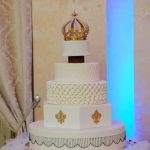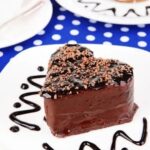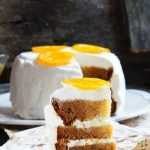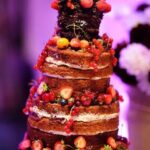Fondant cakes have become increasingly popular choices for special occasions, from birthdays to weddings and everything in between. The smooth, polished appearance of fondant gives these cakes a professional and elegant look that is sure to impress any guest. In addition to their visual appeal, fondant cakes also offer limitless possibilities for creativity and customization.
One of the key reasons why fondant cakes have gained such popularity is their ability to be transformed into breathtaking works of edible art. Unlike traditional buttercream frosting, which can be challenging to shape and mold, fondant provides a clean canvas for intricate designs and decorations. From delicate flowers and whimsical figurines to intricate lace patterns and 3D sculpted creations, the possibilities are endless with fondant.
Another reason behind the immense popularity of fondant cakes is their versatility. Fondant can be easily colored and flavored, allowing decorators to match the cake’s theme or incorporate unique flavors into each creation. With its smooth texture, fondant also provides an ideal surface for painting or airbrushing techniques, adding an extra touch of artistry to the finished product.
Getting Started
When it comes to decorating fondant cakes, having the right tools and ingredients is essential. This section will guide you through the necessary items you’ll need to gather before embarking on your fondant cake decorating journey.
Gathering Tools
Before you begin decorating with fondant, it’s crucial to have the proper tools on hand. Some essential tools for fondant cake decorating include:
- Rolling pin: A large rolling pin specifically designed for fondant will help you roll out the fondant evenly.
- Fondant smoother: This tool is used to smooth the fondant onto the cake and remove any air bubbles or wrinkles.
- Fondant cutters: These come in various shapes and sizes and are used to cut out different designs or shapes from the rolled-out fondant.
- Modeling tools: These tools can help you sculpt and shape fondant into intricate designs, such as flowers or figurines.
- Piping bags and tips: Essential for piping decorations on top of your fondant cake, such as writing or creating borders.
Ingredients Needed
In addition to gathering the necessary tools, it’s also important to ensure you have all the required ingredients ready for your fondant cake decoration. The main ingredient, of course, is the fondant itself. You can either make homemade marshmallow-based fondant or purchase pre-made ready-to-use fondant from a store. Other ingredients you may need include:
- Cake layers: Before applying fondant, make sure you have baked and cooled your cake layers according to your desired flavor.
- Buttercream frosting or ganache: This acts as a crumb coat between the cake layers and the Fondant to ensure a smooth surface for applying Fondant.
- Food coloring: If planning on coloring your Fondnat, gel or powder food coloring works best as they won’t alter its consistency like liquid food coloring might.
- Confectioners’ sugar or cornstarch: To dust the work surface and rolling pin, preventing the fondant from sticking.
By gathering the necessary tools and ingredients beforehand, you’ll be well-prepared for a smooth decorating process. This will enable you to create stunning fondant cake designs and bring your imagination to life.
Preparing the Cake
To achieve a beautifully decorated fondant cake, it is essential to begin with a perfectly baked cake base. Here are some helpful tips to ensure your cake is the ideal foundation for fondant decoration:
- Choose the right cake recipe: When baking a cake for fondant decoration, it is best to choose a denser and firmer type of cake, such as a butter pound cake or a sponge cake. These types of cakes have enough structure to support the weight of the fondant without getting squished or collapsing.
- Evenly level your cake: Leveling your cake ensures that you have an even surface to work with when applying and covering it with fondant. Use a long serrated knife or a leveling tool to carefully trim off any uneven tops or domed areas of the cake layers.
- Crumb coat your cake: Applying a crumb coat before adding the fondant helps seal in any loose crumbs and provides a smooth surface for the fondant to adhere to. Spread a thin layer of buttercream frosting all over the trimmed and leveled cake using an offset spatula. Make sure to fill in any gaps or holes in between layers as well.
- Chill your crumb-coated cake: After applying the crumb coat, place your cake in the refrigerator for about 15-30 minutes until the buttercream sets. Chilling helps firm up the frosting, making it easier to handle when applying and smoothing out the fondant later on.
- Dust with powdered sugar or cornstarch: Before rolling out your fondant, dust your work surface with powdered sugar or cornstarch to prevent sticking. Additionally, lightly dust the top of your chilled crumb-coated cake with powdered sugar or cornstarch before applying the fondant.
By following these tips, you can ensure that your cake base is sturdy, level, and ready for seamless application of fondant. Remember that practicing proper cake preparation is key to achieving a visually stunning and professional-looking fondant cake.
Rolling and Applying Fondant
Rolling and applying fondant is a crucial step in decorating a fondant cake. It requires precision and careful handling to ensure a smooth and flawless finish. This section will provide a step-by-step guide on how to roll out fondant and cover the cake smoothly, allowing you to create a professional-looking cake.
Step 1: Prepare the Workspace
Before you start rolling out the fondant, make sure your workspace is clean and free from any debris. Dust your work surface with powdered sugar or cornstarch to prevent sticking. Also, prepare all the necessary tools such as a rolling pin, fondant smoother, and sharp knife or pizza cutter.
Step 2: Knead the Fondant
Kneading the fondant helps to warm it up and make it more pliable. Start by tearing off a small portion of the fondant from the main batch. Knead it in your hands until it becomes soft and elastic. If the fondant feels dry or stiff, you can add a little bit of vegetable shortening or glycerin to improve its texture.
Step 3: Roll out the Fondant
Place the kneaded fondant onto your prepared work surface. Roll it out using a lightly dusted rolling pin, starting from the center and moving towards the edges. Rotate and lift the fondant occasionally to ensure it doesn’t stick to the surface.
To achieve an even thickness, use rolling guides (wooden dowels or strips of parchment paper) on either side of your fondant.
Step 4: Covering the Cake
Once you have rolled out your fondant to your desired size (large enough to cover your cake), carefully lift it using both hands or wrap it around your rolling pin for easy transfer onto the cake. Gently center the fondant over the cake and slowly drape it down, starting from the top and working your way towards the bottom.
If air bubbles appear while covering the cake, use a fondant smoother to gently press them out towards the sides. Trim off any excess fondant using a sharp knife or pizza cutter.
By following these step-by-step instructions, you will be able to successfully roll out fondant and cover your cake smoothly. Remember to take your time and work carefully for the best results.
Fondant Sculpting Techniques
When it comes to decorating a fondant cake, the possibilities are endless. Fondant allows for intricate and detailed designs that can turn an ordinary cake into a work of art. In this section, we will delve into various fondant sculpting techniques that you can use to create stunning decorations for your cakes.
Flowers
One of the most popular fondant decorations is flowers. With fondant, you can create delicate and realistic looking flowers in any shape or color. To make fondant flowers, start by rolling out a small piece of colored fondant into a thin sheet.
Next, use flower cutters or plunger cutters to cut out flower shapes. Gently press the center of each flower using a ball tool or your fingertip to give it dimension. Finally, assemble the flowers by layering them on top of each other and adhering them with edible glue or water.
Bows
Adding a bow to your fondant cake instantly adds elegance and sophistication. To create a fondant bow, start by rolling out a long strip of fondant and folding it in half lengthwise to create a loop shape. Pinch the middle of the loop together to form the center of the bow.
Next, roll out two smaller strips and fold them into loops, similar to how you made the first loop. Attach these smaller loops on either side of the larger loop with edible glue or water. Finally, roll out another thin strip for the tail of the bow and attach it underneath the center.
Figurines
For those looking to add some personality or customization to their cakes, creating fondant figurines is a great option. Start by shaping colored fondant into basic body parts like heads, bodies, and limbs. Attach the pieces together using edible glue or water. Use tools to add facial features and details like hair, clothing, and accessories. Don’t be afraid to get creative and experiment with different shapes and colors to bring your figurines to life.
By exploring these fondant sculpting techniques, you can elevate the design of your cake and impress your guests. Remember that practice makes perfect, so don’t be discouraged if your first attempts are not flawless. With time and patience, you will master these techniques and create beautiful fondant decorations that will truly make your cakes stand out.
Coloring Fondant
Coloring Fondant: How to Achieve Vibrant Colors Using Gel or Powder Food Coloring
Coloring fondant is an important step in decorating a fondant cake, as it adds personality and visual appeal to the overall design. Gel or powder food coloring is the preferred choice when it comes to achieving vibrant colors that stand out.
When using gel or powder food coloring, it’s important to start with a small amount and gradually add more until the desired color is achieved. This allows for better control over the intensity of the color and prevents over-saturating the fondant. It’s also helpful to use a clean toothpick or a small spatula for mixing in the coloring.
| Gel/Powder Food Coloring | Vibrant Colors |
|---|---|
| Gel: Red | Bright Red |
| Gel: Blue | Deep Blue |
| Powder: Yellow | Vibrant Yellow |
| Gel: Pink | Hot Pink |
It’s important to note that gel or powder food coloring may slightly alter the consistency of fondant, making it softer or stickier. To compensate, additional powdered sugar can be added during the kneading process until the desired consistency is achieved.
Once you have colored your fondant, make sure to store it properly by wrapping it tightly in plastic wrap to prevent it from drying out. Fondant can also be stored in an airtight container to maintain its vibrant color. When it comes time to use the colored fondant, allow it to reach room temperature and knead it gently to restore its pliability.
By following these tips and using gel or powder food coloring, you can create fondant cakes with stunning and vibrant colors that are sure to impress at any special occasion.
Adding Texture
One of the key aspects of decorating a fondant cake is adding texture and patterns to create visual interest and depth. Texture can enhance the overall look of a cake and make it more visually appealing. There are several techniques that can be used to achieve this, including using embossing mats, stencils, or piping gel.
Embossing mats are tools that create patterns and designs on the surface of fondant. They come in a variety of designs such as floral patterns, lace patterns, or geometric shapes. To use an embossing mat, roll out your fondant to the desired thickness and then carefully press the embossing mat onto the fondant.
Apply even pressure to ensure that the design is imprinted evenly across the surface. Remove the mat and you will be left with a beautifully textured pattern on your fondant.
Stencils are another great tool for adding texture to fondant cakes. They come in various designs and shapes and can be used to create intricate patterns or images on the surface of the fondant. To use a stencil, place it over the rolled-out fondant and gently spread royal icing or buttercream over it using an offset spatula or palette knife. Carefully lift off the stencil, revealing a detailed design on your fondant.
Piping gel is a versatile medium that can be used to add texture and shine to fondant cakes. It is transparent and has a thick consistency, making it perfect for creating raised patterns or borders on cakes. You can pipe it directly onto the surface of the cake or onto parchment paper first before transferring it onto the cake. Piping gel can also be tinted with food coloring for added visual appeal.
By utilizing these techniques with embossing mats, stencils, or piping gel, you can take your fondant cake decorations to another level by adding depth and texture. These methods allow you to experiment with different patterns and designs depending on the theme or occasion of the cake. With practice and creativity, you can create stunning fondant cakes that are not only visually appealing but also stand out from the crowd.
| Technique | Description |
|---|---|
| Embossing Mats | Tools used to create patterns and designs on fondant by pressing them onto the surface |
| Stencils | Templates with various designs used to create intricate patterns or images on fondant |
| Piping Gel | A thick, transparent gel used to create raised patterns or borders on cakes |
Finishing Touches
Using Edible Paints
Once the fondant is perfectly smooth and covering the cake, it’s time to add some color and bring your design to life. One popular way to enhance the overall appearance of a fondant cake is by using edible paints. These paints are specifically formulated for use on food surfaces and come in a wide range of colors.
To use edible paints, simply dip a clean paintbrush into the desired color and begin painting onto the fondant. You can create intricate designs or add subtle details depending on your preference. It’s important to have a light hand when painting on fondant, as too much pressure can cause the surface to become uneven or even tear. Allow the painted fondant to dry completely before adding any additional decorations.
Adding Shimmer Dust
Add a touch of sparkle and glamour to your fondant cake with shimmer dust. Shimmer dust is fine powder that contains tiny particles of edible glitter that catch the light beautifully. It comes in various colors and can be used sparingly for a subtle glow or applied more heavily for a dramatic effect.
To apply shimmer dust, simply dip a clean brush into the powder and lightly dust it over the desired areas of your cake. You can opt for an all-over shimmer or concentrate it on specific elements such as flowers or borders. Remember to use a light touch to avoid applying too much shimmer dust at once.
Using Edible Glitter
If you’re looking for an even more dazzling effect, consider using edible glitter on your fondant cake. This type of glitter is made from gum arabic or other safe-to-consume materials and adds a sparkly finish to your creations. Edible glitter typically comes in small flakes or larger shapes like stars, hearts, or hexagons.
To apply edible glitter, carefully sprinkle it over the desired areas of your cake. You can apply it all over for a magical effect or use it sparingly to accentuate specific details. Edible glitter is best applied gently, as applying too much may result in clumps or a messy appearance.
Remember, when using any of these finishing touches, it’s important to keep the overall design and theme of your fondant cake in mind. Experiment with different color combinations, shades, and textures to create a visually stunning masterpiece that will wow your guests. And most importantly, have fun and let your creativity shine.
Troubleshooting
Working with fondant can be a fun and rewarding experience, but it’s not without its challenges. In this section, we will address some common issues that may arise while working with fondant and provide solutions to help you troubleshoot and overcome them.
One common issue when working with fondant is cracking. Cracking can occur when the fondant becomes too dry or is rolled too thin. To prevent cracking, make sure your fondant is properly conditioned by kneading it until it becomes soft and pliable.
If the fondant feels dry, you can add a small amount of vegetable shortening or glycerin to moisten it. When rolling out the fondant, be careful not to apply too much pressure as this can cause the surface to crack. Roll the fondant out evenly and use a rolling pin guide if needed to ensure an even thickness.
Another common issue is air bubbles forming under the fondant. Air bubbles can appear if there are pockets of trapped air between the cake and the fondant layer. To avoid this problem, make sure your cake is completely smooth before applying the fondant.
Trim any uneven edges or bulges from the cake and lightly coat it with a thin layer of buttercream or ganache before covering it with fondant. This helps create a smooth surface for the fondant to adhere to and reduces the chances of air bubbles forming.
| Issue | Solution |
|---|---|
| Cracking | – Properly condition your fondantt – Roll out evenly and avoid applying too much pressure |
| Air Bubbles | – Ensure cake surface is smooth before applying fondantt – Coat cake with a thin layer of buttercream or ganache before covering |
By being aware of these common issues and armed with the knowledge to troubleshoot them, you can confidently tackle any challenges that may arise while working with fondant. Remember, practice makes perfect, so don’t be discouraged if you encounter difficulties initially. With time and experience, you’ll become more skilled at decorating fondant cakes and create stunning creations for any occasion.
Tips for Storage and Transportation
Storing and transporting fondant cakes requires careful handling to ensure that the cake maintains its integrity and presentation. Here are some tips on how to do so effectively:
Choosing the right container
When storing a fondant cake, it is crucial to choose the right container to protect it from external elements. Consider using a cake box or a sturdy, airtight container with enough space to prevent the fondant from getting smudged or damaged during transportation.
Refrigeration
If your fondant cake contains perishable fillings such as cream or fruit, refrigeration is necessary. However, keep in mind that refrigeration can cause condensation, which can affect the appearance of the fondant. To avoid this issue, place the cake in an airtight container before refrigerating and allow it to come to room temperature before opening the container.
Avoid direct sunlight and extreme temperatures
Fondant is sensitive to heat and humidity, so it’s essential to prevent exposure to direct sunlight and extreme temperatures during storage and transportation. These factors can cause the fondant to soften or melt, leading to a compromised texture and appearance.
Secure stacking for tiered cakes
For tiered fondant cakes, proper support and stacking are crucial when transporting them. Use dowels or cake pillars between tiers for stability and secure each layer with dowel rods inserted vertically through the center of the entire cake.
Protecting fragile decorations
If your fondant cake has delicate decorations like sugar flowers or figurines, take extra precautions when storing and transporting them. Wrap each decoration individually in tissue paper or bubble wrap before placing them on the cake or in separate compartments inside the container.
By applying these storage and transportation tips, you can ensure that your fondant cake remains intact and visually appealing until it reaches its destination. Being mindful of these best practices will help you maintain the integrity and presentation of your beautifully decorated fondant cake.
Conclusion
In conclusion, decorating fondant cakes can be a fun and rewarding experience. By following the fundamental techniques outlined in this article, you can create stunning and professional-looking cake decorations for special occasions. From rolling out the fondant to sculpting intricate designs, coloring with vibrant hues, and adding texture and finishing touches, each step plays a vital role in achieving an impressive final result.
It is important to remember that working with fondant may require practice and patience. Don’t be discouraged if your first attempt does not turn out perfectly. With time, you will gain confidence and improve your skills. Troubleshooting common issues such as cracking or air bubbles is part of the learning process, so don’t hesitate to explore solutions and experiment with different techniques.
Ultimately, the key to successful fondant cake decoration lies in unleashing your creativity. While this article has provided a comprehensive overview of the techniques involved in working with fondant, it is just the beginning. Experiment with different colors, patterns, and designs to create unique and personalized cake decorations that reflect your style and taste. Don’t be afraid to think outside the box and try new ideas. The possibilities are endless when it comes to fondant cake decorating.
So go ahead and embrace the artistry of fondant cake decoration. With practice, determination, and some imaginative flair, you can create beautiful masterpieces that will impress your friends, family, or clients on any special occasion.

Welcome to my blog about home and family. This blog is a place where I will share my thoughts, ideas, and experiences related to these important topics. I am a stay-at-home mom with two young children. I hope you enjoy reading it! and may find some helpful tips and ideas that will make your home and family life even better!





